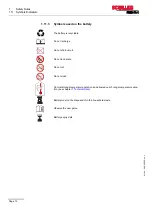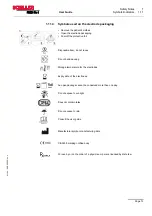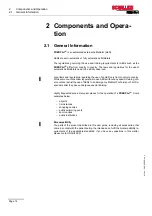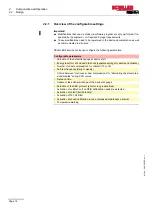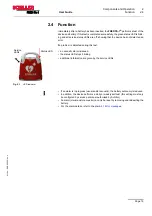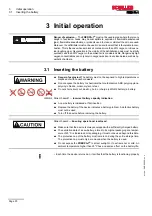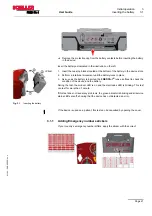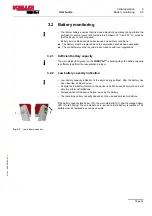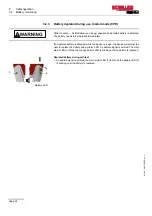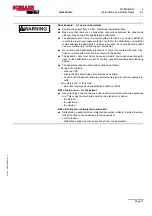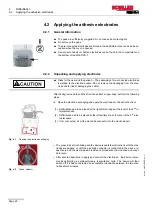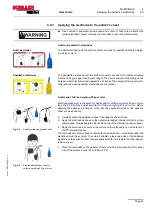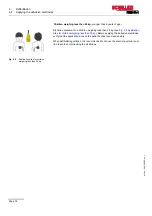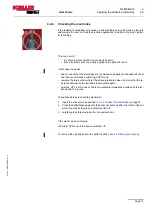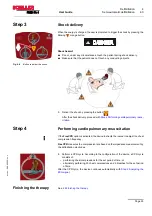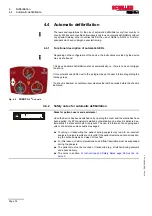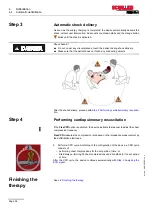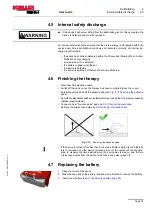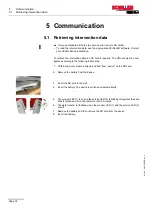
4
Defibrillation
4.1
Instructions and Safety Notes
Page 26
A
rt.
no.
: 0-4
8-02
40 Rev. c
FRED PA-1
4 Defibrillation
4.1 Instructions and Safety Notes
4.1.1
Instructions
• The
FRED PA-1
®
is a high-voltage electrotherapy device. Only personnel authorised
by local law are permitted to use these devices. Improper use can endanger life.
• Non medical personnel is only permitted to use an AED such as the
FRED PA-1
®
if
local law approves of this practice.
• The success of the defibrillation depends on the correct application of the defibril-
lator but also on the heart's condition. It is the physician's responsibility to take any
additional measures (e.g. adrenaline).
• According to AHA/ERC guidelines, even children under 8 years may be
defibrillated.
• The electrodes should be applied in the anterior-anterior position. With children,
anterior-posterior placement is advised to prevent a short-circuit between the two
defibrillation electrodes.
• A defibrillation can fail with certain disease patterns.
•
Patients with implanted pacemakers
—
FRED PA-1
®
features an electronic pac-
er pulse suppression algorithm and therefore, pacemaker pulses are not taken into
account during the analysis. Depending on the pacemaker model and on the posi-
tion of the electrodes, the compensation pulse following every pacer pulse may be
considered as a QRS complex. In this case, the analysis can be distorted and in-
accurate. It depends on the pacer pulse parameters whether or not the compensa-
tion pulse is counted as a QRS complex.
4.1.2
Safety notes for AED use
Changes, including the operational behaviour, affecting safety must be immedi-
ately reported to the responsible.
Shock hazard
—
for patients
In unfavorable situations, the possibility of ECG analysis errors should not be
dismissed. The device must therefore only be used if the following symptoms are
found:
– not responsive,
– no respiration,
– no pulse.

